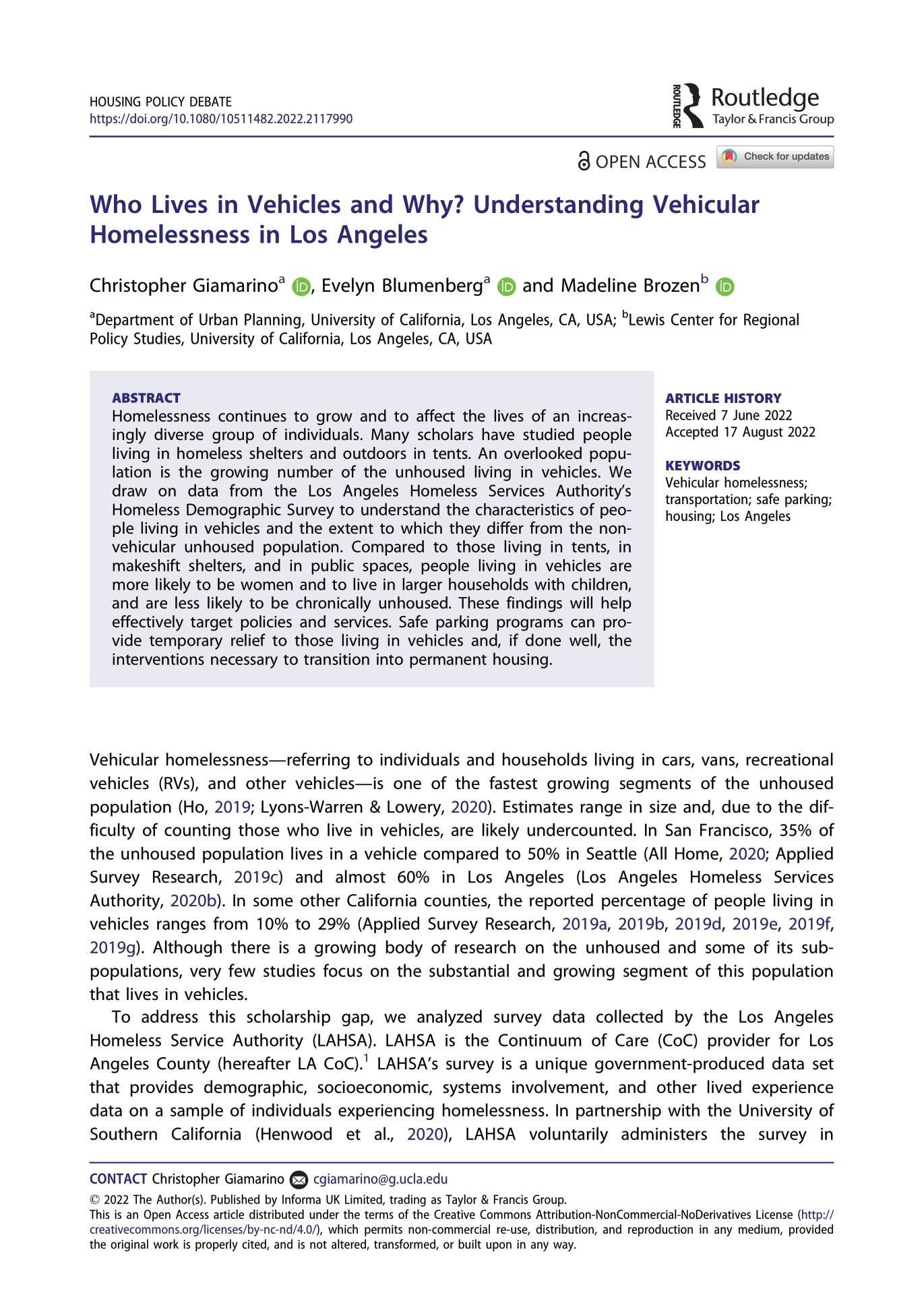Date: September 15, 2022
Author(s): Christopher Giamarino, Madeline Brozen, Evelyn Blumenberg
Abstract
Homelessness continues to grow and to affect the lives of an increasingly diverse group of individuals. Many scholars have studied people living in homeless shelters and outdoors in tents. An overlooked population is the growing number of the unhoused living in vehicles. We draw on data from the Los Angeles Homeless Services Authority’s Homeless Demographic Survey to understand the characteristics of people living in vehicles and the extent to which they differ from the nonvehicular unhoused population. Compared to those living in tents, in makeshift shelters, and in public spaces, people living in vehicles are more likely to be women and to live in larger households with children, and are less likely to be chronically unhoused. These findings will help effectively target policies and services. Safe parking programs can provide temporary relief to those living in vehicles and, if done well, the interventions necessary to transition into permanent housing.
About the Project
A recent survey by the Public Policy Institute of California shows that 85% of Californians are concerned about the presence of homeless people in their community and believe addressing this issue should be a top priority. Few scholars have studied the large and growing numbers of people who live in their vehicles. According to point-in-time count data from the 2019 Los Angeles Homeless Services Authority, over 40% of the unsheltered homeless population in LA County, some 14,000 people, rely on vehicles (cars, vans, RVs) for shelter. The increase in vehicular homelessness raises challenges for both people who are experiencing homelessness and for cities. Vehicle living can be cost-effective relative to sky-high rents, but residents often lack essential amenities. At the same time, residents complain about the adverse effects of vehicle encampments on their neighborhoods. In response, this project seeks to create a better understanding of vehicular homelessness as a way for both homeless providers and transportation officials alike to address this precarious form of shelter.


